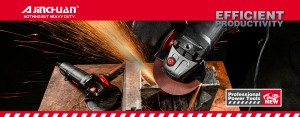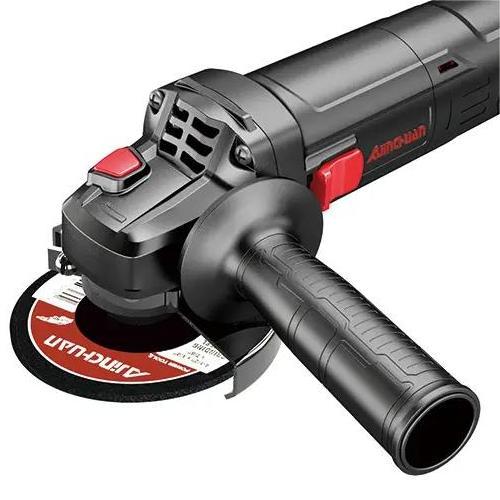When an Angle grinder is overloaded, the following reactions usually occur:
First, motor response
Reduced rotational speed: When overloaded, the motor’s load exceeds its rated power, resulting in a significant drop in rotational speed and a slower cutting or grinding speed.
Motor heating: The current increases, causing severe heating of the motor windings and commutator. Long-term overload may lead to motor burnout.
Abnormal noise from the motor: When overloaded, the internal components of the motor are subjected to increased force, which may cause abnormal noise.
Second, the reaction of the protective device
Overload protection trigger: Many Angle grinders are equipped with built-in overload protection devices. When the current is detected to exceed the rated value, the power supply will be automatically cut off to prevent motor damage.
Leakage protection device operation: If overload causes leakage, the leakage protection device will quickly cut off the power supply.
Third, operational performance
Poor cutting or grinding effect: Due to the decrease in rotational speed, the efficiency of cutting or grinding decreases, and there may be situations where the cutting is not thorough or the grinding is uneven.
Intensified wear of grinding wheels: When overloaded, the friction between the grinding wheel and the workpiece increases, accelerating the wear rate of the grinding wheel.
Fourth, fault manifestations
Commutator burnout: When overloaded, the current is too large, causing severe heating on the surface of the commutator, which may lead to commutator burnout.
Accelerated brush wear: As the current increases, the contact resistance between the brush and the commutator rises, leading to accelerated brush wear.
To avoid overload, the following measures are recommended:
Avoid prolonged continuous operation: Take regular breaks to allow the motor to cool down.
Select workpieces reasonably: Avoid cutting or grinding workpieces that are too hard or too thick.
Regular inspection and maintenance: Check the motor, carbon brushes and commutator, and replace worn parts in time.
Post time: Apr-18-2025


